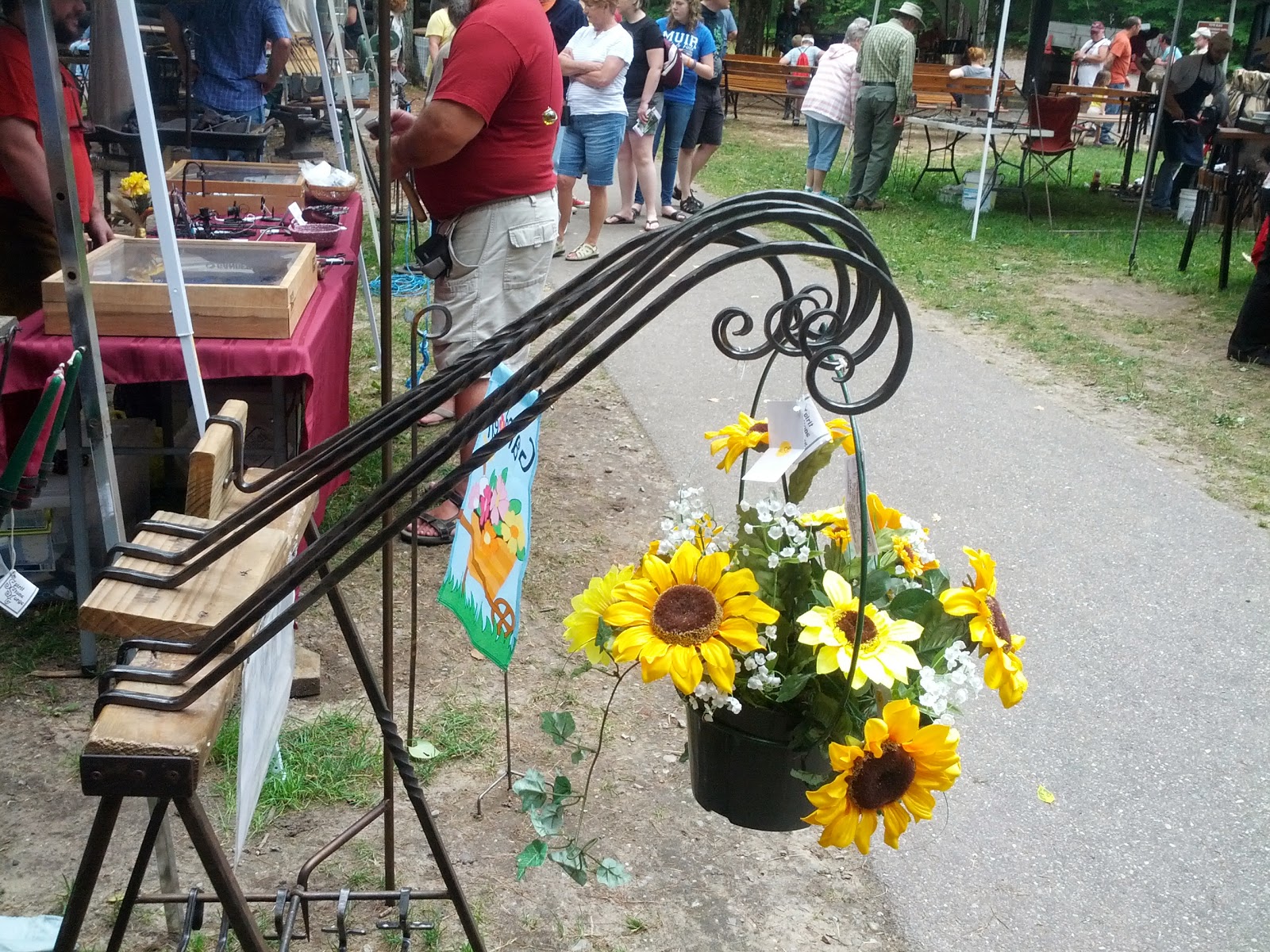It's quick, easy, and if all go's well it should be free.
I've been making these anvils for a few years now and I have to say, if nothing else, they're extremely handy!
In the olden days before I had a real "anvil" anvil I made these.
All you really need to do is whack a few spikes into a log and you're good.
(A keen eye would notice that there is some welding in the picture above, that was one of my beginner anvils and I had a stick welder and too much free time. The welding is not necessary)
There's lots of different ways of making anvils, this is probably one of the easiest ways, and one of the cheapest.
Other ways (which depending on your resources my be better suited to you)
are simply taking a piece of Railroad track or some other large chunk of fairly hard steel and setting it in a 5 gallon bucket of cement. Like so...
There's also the double hammer method...
This method is very easy to whip up quickly (obviously). but I really don't recommend it.
It's a very small surface and it's pretty unstable.
The hammer handle likes to swing up and crack ya in the noggin!
There's also the method of finding a great big chunk of steel so big you don't need to secure it!
For acquiring this I would recommend going a scrap metal yard and finding a piece that's right for you and buying it at scrap price.
Of course you're buying by the pound so if your faced with the problem of choosing between a nice 50 LBS chunk and a sweet 300 LBS block, you may want to look at the scrap steel prices for some help.
Or if you don't mind going through anvils like toilet paper or peanut butter, there's very cheap cast iron anvils that or meant for decoration that can actually be used to some extent.
 |
| I'm aware this is a Vulcan, but you get my point. |
The problem with these is they do not have the tool steal face that real
anvils have. So that means practically everything you use on this anvil will be harder then it.
However, if you're looking for something fast, free and very easy, this is my solution.
First, know what you're looking for...
 |
| sorry about the low quality |
We're interested in tie plates and spikes. (just as an FYI the clips are great for knife making and just smithing in general)
Tie plates, for those who don't need to step over and around them 3 times a day, look like this...
And spikes look like this...
They both are insanely easy to come by. Especially if your near old Railroad tracks.
You'll also want a stump, the harder the better!
The stump in the first picture is a piece of hickory, and to this day the anvil has never come out of the log.
All you need to do is get your stump how you like it (flat on both sides, on level ground, the right height, etc.) then pound the spikes through the plate and into the stump, just like it was pounded into the Railroad tie it was originally on...
If you do not have a large hardwood stump, and need to use something smaller or softer, overtime the spikes may work they're way out. If so there's several things you can do...
1: You can just whack 'em back in again!
2: If you have a welder you can cut the heads off of the spikes, pound them in so they're flush with the surface of the plate, then plaster an insane amount of weld in and all around the hole and top of the headless spike. Then grind the bumps flat and you're good to go! (If you don't know how to weld this is a great beginner project)
3: Try pulling the spikes out and getting a new stump or new place on the stump.
4: Pull the spikes, get a new stump or new place, heat the plate really hot, not quite glowing, but just red, and then pound it into the stump still hot. It will burn it's way into the log and set it self perfectly into the wood. so now when you hit it, it will wobble less, and not work the spikes out as much.
A quick note for this last one, do not dump water on your plate to get it to cool faster. This will make the plate harder and more brittle, and more likely to crack in half.
Again this is just one of the many kinds of cheap and easy anvils.
If this doesn't work for you I would recommend looking at some of my future posts. I'll be talking about some of the anvils in this post and going more into depth about how you can cheaply get your hands on them!
As always I'd love to hear your questions and read your comments! thanks!
Hope this helped, Jim. -Eric eric.viele@forgeofechos.com

























